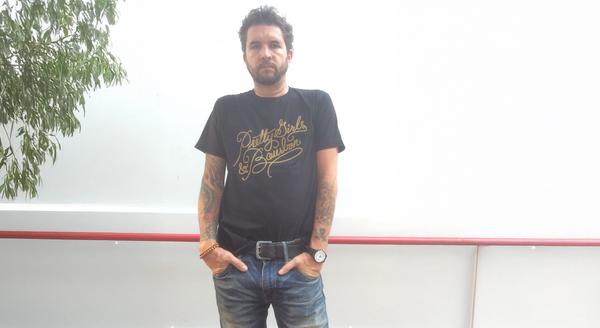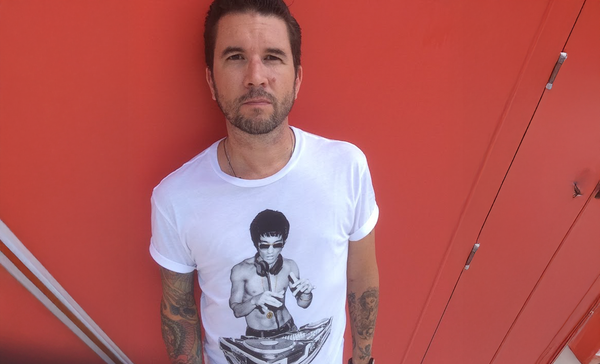Meet the Synths: How Synthetic Audiences, Powered by AI, Help Us Navigate Change
In a world that’s obsessed with chasing the new, we often overlook those who are quietly, powerfully, becoming someone new.

We’ve spent decades building customer personas based on age, gender, income, and surface-level behavior. But those proxies, efficient as they may be, rarely capture what actually drives change. The real shifts occur during transitions, such as when someone retires early or returns to work. Or ends a 15-year marriage and begins a new pursuit, or moves to a new city, or maybe even country. These aren’t moments that show up cleanly in demographic spreadsheets. But they’re where markets move, where identity reshapes, and where brand relevance is earned or lost.
This is the terrain of the Epilogue Economy™. A place not defined by endings, but by evolution. And to understand it, we need better tools.
Which is where the Synths come in.
Field Notes on The Epilogue Economy™ is a reader-supported publication. To receive new posts and support my work, consider becoming a free or paid subscriber.
What Are Synthetic Audiences?
In short: they’re AI-generated archetypes, not static personas, but dynamic expressions of people in motion. Built using the language models we now have at our fingertips, these synthetic profiles help us explore what transitions feel like from the inside. And more importantly, what unmet needs, overlooked opportunities, and emerging behaviors are hiding there.
This isn’t persona theater. It’s mapmaking. To lead in the Epilogue Economy, brands need more than data.
They need guides.
The Map and the Model
At RockPaperScissors, our work has always been about helping businesses see the possible. Lately, we have been thinking about the invisible: the late bloomers, the identity shifters, those in transition moments in their lives. What AI gives us now is the ability to bring these lives to life, not just as statistics, but as synthetics with a point of view.
Imagine briefing a creative team not with “women 45–65, primary caregivers” but with The Returner, a synthetic voice shaped by hundreds of real-world stories of re-entry into the workforce. Imagine testing a product narrative against The Empty Spacer, who’s just packed up her youngest child’s belongings and is deciding what to do with her guest room. And her time.
These aren’t fictional characters. They’re plausible futures, drawn from real tensions, first-party datasets, scraped social feeds, images from Instagram, Pinterest, and TikTok.
And they speak volumes.
Beyond the Moodboard
Traditionally, building a detailed customer persona required weeks of interviews, research synthesis, workshops, and cross-functional alignment. And even then, the result was often a snapshot - fixed in time, slow to update, and dangerously generalized.
Synthetic audiences change that.
Because they are built on language models, they can be updated instantly, infused with fresh data, tuned to match a brand’s tone, or recalibrated to reflect a new market reality. They can simulate conversations. Stress-test campaigns. Even react to real-world events, such as economic shifts, cultural flashpoints, and election cycles, in near real time.
You can ask them: How does this price increase feel to you? Or: Does this ad speak to where you are right now? You can even ask: What’s missing?
And they’ll answer with nuance, contextual awareness, and often, unexpected insight. Not emotion, exactly, but a convincing reflection of what someone in that situation might say, want, or worry about.
Designing the Synths
I’m currently developing a small cohort of these synthetic archetypes. Each one:
- Begins with a transition (e.g., divorce, retirement, reinvention)
- Carries a set of internal contradictions (e.g., freedom vs. loneliness)
- Has a defined set of needs, desires, and blind spots
- Can respond to questions, prompts, and creative briefs, almost like a living participant.
They’re built using a mix of language models, first-person journaling, scenario testing, and pattern recognition drawn from interviews, ethnography, and brand strategy. Think of them as AI-enabled empathy machines - a new way to listen, and learn, at scale.
And yes, the plan is to evolve these into custom GPT agents, conversational AIs via ElevenLabs, and possibly AI-enabled avatars via HeyGen to put a face to audience archetype. Tools that reside within my organization, which can be consulted during product development, content planning, or strategic foresight. I use them to test ideas, refine strategies, or conduct surveys.
Why This Matters
Age is no longer the only story. Change is.
Arguably, Age was a focal point when we first defined the Epilogue Economy a couple of years ago. But like the times we live in, things evolve. And if Brands want to stay relevant, they need to stop targeting “older consumers” and start tuning into people navigating change, with all the nuance, discomfort, and possibility that entails.
And if the Agencies servicing these Brands want to stay competitive, they need to begin experimenting with these tools, formats, and ways of thinking about the challenges brands are facing.
Synthetic audiences won’t replace authentic voices, yet. But they can help us hear the ones we’ve been missing, or at the least model for these various life stages – age, transitions, new beginnings.
The future isn’t a demographic.
It’s a dialogue.




